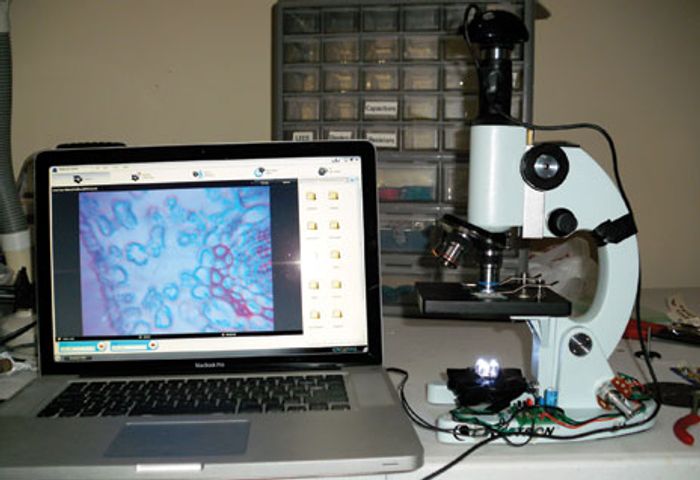DIY digital microscope
May 13, 2011

Turner purchased a well regarded optical scope, and an inexpensive webcam, and married the two with a little Krazy Glue after removing the lens from the webcam. This is necessary to avoid the kind of fruitless arguing that sometimes occurs in marriages, in this case between the microscope optics and the webcam over who is going to do the focusing.
By itself that wouldn’t be too much of a project, so Turner also built an LED illumination circuit (the microscope only comes with a mirror) based on a 555 timer. He also attempted to build an electronic slide table, so that in addition to not having to squint into a microscope eyepiece, he could pan the image around on the computer screen with just a joystick. He accomplished a single axis table made from wood, but gave up on the dual axis table.
I think the table is overkill. And since this column is all about overkill, that’s OK. If Turner had searched the Gadget Freak archives he could have found some pointers to simple and cheap slide tables. The one made from DVD laser positioners would have been perfect for his microscope with some mechanical rework.
One improvement I would suggest would be to add lighting from above in order to view objects that are opaque. Turner could adapt his 555 circuit to drive LEDs from above and below, varying the brightness of each individually.
Steve Ravet
Design News Gadgeteer
You May Also Like



